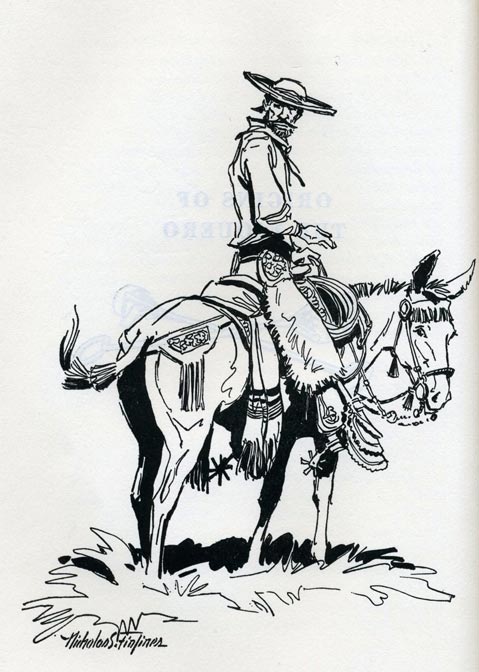What Is a Vaquero?
Horsemen of Unparalleled Skill
In Argentina, they were called gauchos, in Chile, huasos, and on the Great Plains, cowboys. In Old California, they were called vaqueros, horsemen of unparalleled skill who tended the cattle herds on the great ranchos.
The word vaquero is derived from vaca, the Spanish word for cow. As the Spanish colonized Alta California in the late 1700s and early 1800s, livestock became an all-important foodstuff and trading commodity. The hide-and-tallow trade became the center of the Alta California economy, and as the cattle herds grew, so did the need for a labor force to tend them. As with their other labor needs, the Spanish colonizers turned to the indigenous native populations — in this area, the Chumash — to look over their livestock herds.

The colonizers who settled in this region were often themselves highly skilled horsemen. These included not only members of the military but also many of the Franciscan padres who staffed the missions. Horsemanship was unknown to the Chumash, and the newcomers were forced to ignore a Spanish decree which forbade the teaching of these skills to the natives. The Chumash readily took to riding horses, and the majority of the vaqueros during the Spanish and Mexican eras had a goodly mixture of Chumash blood coursing through their veins. With the advent of the Gold Rush, there was an influx of settlers from Mexico, many from Sonora, who became vaqueros. There were also a growing number of Americans who entered the trade as California came under U.S. control in the late 1840s.
A number of the accoutrements we associate with the American cowboy are variants of vaquero equipment. The California saddle is very similar to the traditional one of the vaquero except that the latter has an additional cinch in the rear, thus securing the saddle more firmly to the horse’s back. The advantage of the California saddle is that it moved around on the horse’s back, thus preventing a sore spot from forming on the animal. A good vaquero learned to shift his weight to compensate for the movement of his saddle.
Chaps, leggings to protect a rider from cuts and scrapes when riding through brush, also come from the vaquero tradition. The word chaps is a shortened version of chaparajos, which means leggings. The wide brims that were a feature of the vaqueros’ usual headgear was later adapted for the familiar cowboy hats.
There was no finer compliment to a vaquero than to be called a jinete, an expert rider, one who could tame the wildest bucking bronco. Vaqueros prided themselves on controlling their mounts with weight shifts, and use of their legs, while making only the slightest movements of the reins. One story has the finest of vaqueros using reins made of two tail hairs to guide his horse through the most intricate of maneuvers.
Vaqueros often made their own reatas, or ropes, of rawhide or horsehair. These were thrown from a variety of positions by the rider to catch cattle by their front feet, back legs, or horns. It was a matter of pride to injure neither the cow nor one’s horse in bringing the former down. A vaquero’s horse was his most important possession. The best vaqueros took every opportunity to practice their roping and were known as lazadores when a high level of expertise had been reached.
Vaqueros still ride the open spaces of California today, albeit in vastly reduced numbers. The legacy of their horsemanship and craft remains a vital part of the story of Old California.



